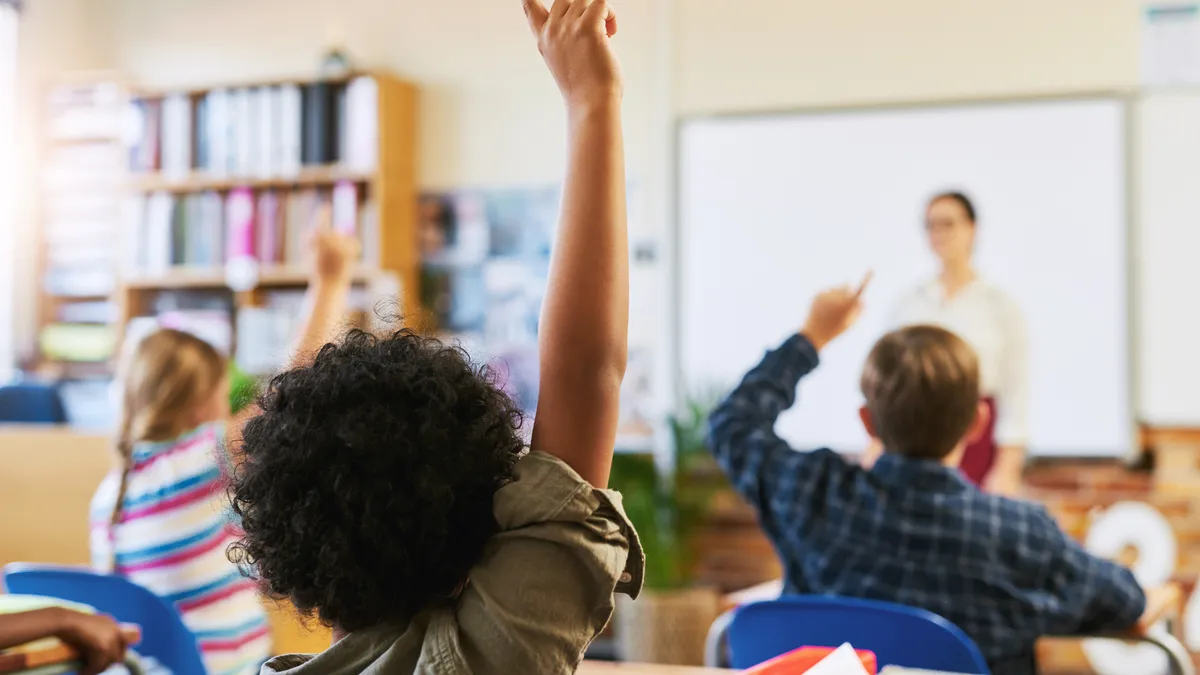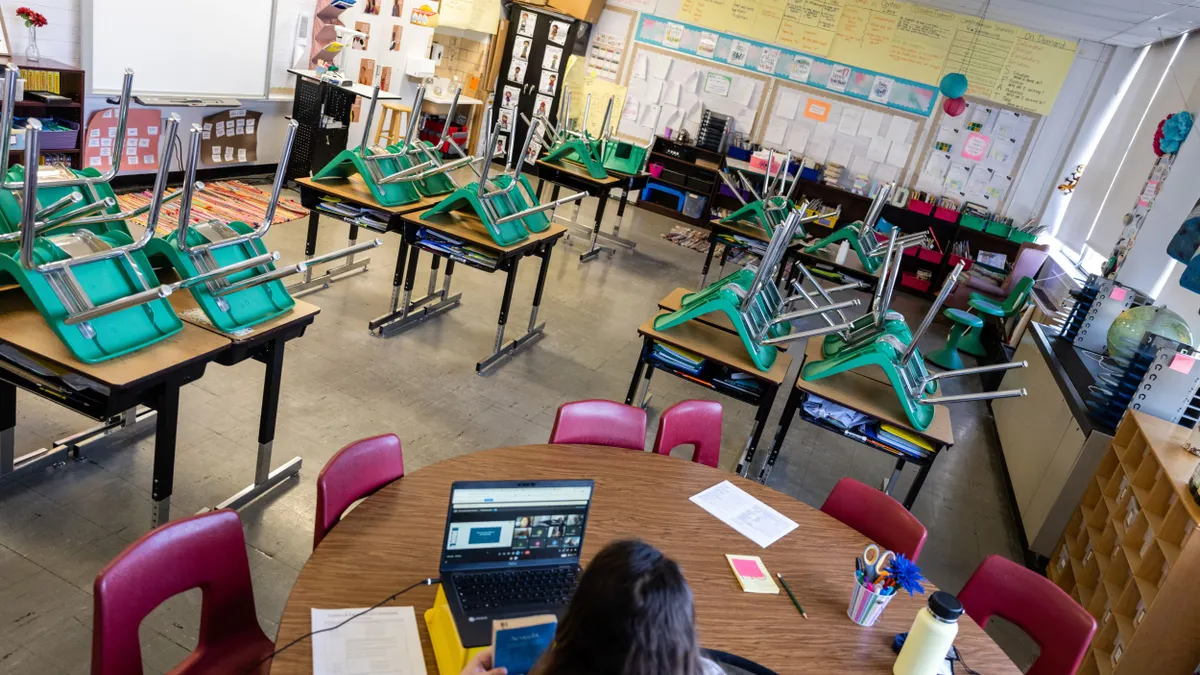Anthony Hamlet was superintendent of Pittsburgh Public Schools from 2016 through 2021.
The past two years have offered ample evidence of the impact remote learning has on students. Virtual education systems kept schools running safely during the early days of the pandemic, reduced bullying in some cases, and gave many students a new sense of autonomy.
But as we returned to classrooms, other effects became apparent. While remote, students missed hands-on learning opportunities and time to bond with peers. Teachers struggled to connect with at-risk students, many of whom had difficulty focusing on their studies in unstable homes. Across the board, students missed educational milestones, falling behind in math, reading and science courses.
School administrators and staff worked diligently to adopt online learning practices and distributed laptops to students in record time. Still, some students had unreliable access to Wi-Fi, others lost loved ones to COVID-19, and many older teens picked up jobs to support their households. These circumstances worsened mental health outcomes and ultimately disengaged students from their lessons.
Student engagement was already alarmingly low prior to the pandemic. Out of 5 million grade 5-12 students surveyed by Gallup in 2018, 29% reported being “not engaged,” and another 24% said they felt “actively disengaged” in learning. The survey further indicated engagement decreases as students age, with only one-third of high schoolers feeling “highly engaged” at school.
Motivation and morale dropped further in the 2020-21 school year, according to data from the EdWeek Research Center. Approximately half of students reported feeling less motivated in class and experiencing lower morale. Teachers’ responses were more dire, estimating more than 80% of their pupils were less motivated and had lower morale.
Student engagement is at the core of successful outcomes in schools, whether that be measured in test scores, social-emotional development or graduation rates. So how can educators meet students where they are? How do we course-correct after months of missed learning opportunities and delays?
Methods to reengage students
There’s no single answer. Demonstrating our commitment to students will take multiple forms and require open dialogue, trust and empathy. Below are a few practices for teachers and administrators to consider.
No two students are identical learners. The following suggestions could have varying success rates depending on classroom size, education level and students’ backgrounds. But with a little personalization, practices like student ownership and hybrid learning can boost engagement.
Encourage collaboration
Being back in the classroom means students reuniting with their peers. Rather than allow such socialization to distract from course materials, teachers can harness that energy. After time apart, group projects and paired learning opportunities serve a dual purpose: encouraging teamwork and reestablishing social norms.
It’s okay to start small. Many teachers report success with “Think-Pair-Share.” This practice has students reflect on what they learned, discuss it with a classmate, and then share their conclusions with the entire class. A five- to 10-minute activity, Think-Pair-Share shakes up the learning day and nudges students to internalize their lessons.
Prompt students to take ownership
It’s been a long time since a class schedule consisted of hour-long lectures and assigned readings. Nowadays, education experts and teachers understand students need greater stimulation to avoid drifting off mid-lesson. Thus, classrooms are an ideal place to support the autonomy of young people who are beginning to recognize and test their limits.
In planning a lesson, make room for student choice. If students need to demonstrate their grasp of how ecosystems function, offer supplies for an array of final projects: a presentation, a written report on a local ecosystem or a self-built terrarium.
Allowing students to make choices tells them educators care about their opinions. It also prompts self-assessment. Students will ask themselves which project they will excel at, which might be a challenge and, moreover, which speaks to their own interests.
Infuse a real-world impact into lessons
We want our classrooms to be a reliable space for students to learn and grow without outside stressors. However, creating a safe environment is not the same as dismissing lived experiences. In fact, connecting students’ studies to their everyday lives often helps them see why they matter in the first place.
In social studies, that might look like initiating a cultural appreciation day, where students discuss their family history, traditions and cuisine. In a literature course, students could write letters to their representatives or create stories for folks in local retirement homes.
If a school has the space and means, science students could build a community garden. School gardens create year-round learning opportunities focused on the local climate, economy and various agricultural skills. By the end of the school year, students receive tangible evidence of their hard work and a new way to engage with the world around them.
Offer sustained virtual opportunities
The pandemic continues to impact our students. But after quickly adapting to remote learning, educators learned new ways to stay in touch with students outside the classroom. Virtual learning shouldn’t lapse because we are back, because online communication is crucial to sustained engagement.
When it comes to study habits, incorporating online programs like Quizlet and Kahoot! into lessons will make students realize being at home doesn’t automatically equate to learning loss. Similar collaborative homework methods can transform a necessary task into a fun extension of any lesson. At the same time, administrators can engage parents and guardians through frequent newsletters and announcements. Informed adults at home can further encourage engaged students.
Conduct engagement check-ins
At the end of the day, the best way to measure engagement is to ask students directly. An anonymous online poll each week could provide insight into what is working in a particular lesson and what needs improvement. More often than not, these constructive critiques go unspoken.
But in the same vein as student ownership, requesting student input offers them a sense of control. Young people want to be heard, to be listened to. Finding small ways to accept feedback and make (reasonable) changes could mean the difference between a committed learner and one simply going through the motions.




















